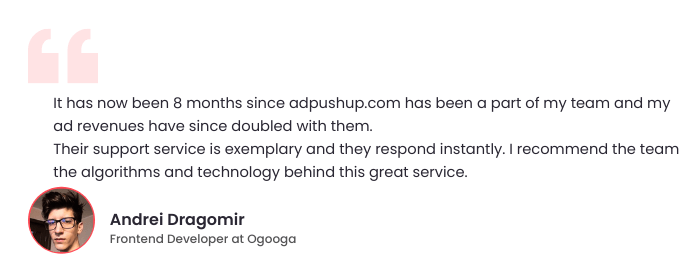Customer data platforms (CDP) are a relatively new technology in the ad tech industry. They will now play an important role in helping publishers gain more insights about their consumers.
According to the Customer Data Platform Institute, the CDP industry revenue for 2019 was expected to exceed $1 billion.
For a long time, publishers relied on data management platforms (DMP) for collecting information about their customers. The best data management platforms have been highly reliant on third-party data for providing consumer insights. But with the impending demise of third-party cookies, DMPs may eventually turn completely obsolete.
This development has opened up opportunities for the CDPs to be used more actively. CDPs solely make use of first-party data, the basis of which they create unique consumer profiles offering actionable insights.
“The CDP can help publishers expand revenue opportunities by using data externally to extend targeting and measurement – truly partnering with brands as segment factories.”
Ameet Shah for the AdExchanger
What Is A Customer Data Platform?

To properly understand what a CDP is, let’s imagine that you are a consumer looking for a pair of sunglasses.
An ordinary online search for sunglasses will include searching on an e-commerce website, further leading to a brand’s website, through paid-ads on social media, through recommendations on blogs, etc.
Any normal product search online looks the same way and does not follow a linear path. Consumers often visit a publisher’s website through multiple sources before making a purchase.
In other words, these are touchpoints that a consumer comes in contact with which brands could not keep track of before. But with CDPs, these touchpoints are used to provide a cohesive and unified profile giving actionable insights into your consumer.
Customer data platforms collect data from a variety of sources including email forms, CRM, data management platforms, etc. This data is then analyzed to form individual customer profiles, something exclusively offered by only this technology.
CDPs have ordinarily served as an important tool for a marketer but their importance for publishers is increasing now more than ever.
Why Should Publishers Invest In A CDP?
Customer data platforms have made a compelling case for themselves for publishers, thanks to third-party cookie apocalypse. With data obtained from third-party sources rendered invalid from 2020, the publishing industry is looking at solutions to fill the programmatic void.
CDPs are pivotal to increasing publisher revenue for the following reasons:
- They rely on first-party data:
As mentioned above, the use case for CDPs is standing out because of their reliance on first-party information. CDPs primarily make use of data such as email IDs, phone numbers, addresses, etc.
- They are privacy-compliant:
User privacy has become a primary source of concern in the ad tech industry. With publishers still reeling from the impact of the GDPR, the CCPA, and now the approaching LGPD, a need for a privacy-compliant platform for storing and analyzing consumer data has arisen. CDPs offer publishers the opportunity to use consumer data in a manner that protects consumers’ privacy.
- They assemble data in one place:
Unlike the way DMPs store data (usually, under an anonymous cookie ID), CDPs provide extensive details about a consumer collected from several sources. All these details (usually first-party data) are mapped to a single ID that can be scanned to find valuable insights about the consumer.
- They improve consumer experience:
Several times, even after making a purchase, a consumer is still seeing the ads for the same product. This can be quite intrusive and deteriorate consumer experience. CDPs help in eliminating that by tracing the entire journey of a consumer’s online browsing and mapping that under a single ID. This helps in enriching the consumer experience, simultaneously improving the trust in your website.
- They provide real-time information:
After gaining popularity, customer data platforms have now evolved to provide real-time information. Customer profiles are constantly refreshed in a CDP, thus providing the most recent browsing information about them. This helps publishers in delivering exactly what their website users might be looking for.
CDP vs DMP: Essential Differences
In case you’re trying to choose between a DMP and a CDP, here’s a table for making a more informed decision:
| Subject | CDP | DMP |
| Type Of Data | Typically collects first-party data. | Mostly collects third-party data. |
| Source Of Data Obtained | Normally obtains data from CRM, newsletter subscriptions, website analytics tools, etc. | Obtains data from cookies, APIs, etc. |
| Customer Profiling | Can store Personally Identifiable Information (PII). Creates unique customer profiles while helping in differentiating between consumers. | Cannot store PII. Works with data that is anonymous and stored as an aggregate. |
| Use Case | Can be used for all marketing activities including building a new brand, relationships with customers, customized newsletters, etc. | Can only be used for advertising activities such as improving targeted advertising. |
| Data Retention | Stores information for a long time, while constantly updating it through real-time refreshing. | Uses cookies as primary data, hence, can only store data for a short span (maximum 90 days) |

The Way From Here
The ad-tech space currently is brimming with developments revolving around user privacy. Publishers are under pressure to either migrate or develop solutions that protect user identity while not compromising on programmatic revenue. CDPs appear as a right fit for publishers at the moment as they partially solve their third-party cookie apocalypse crisis. In the end, developing trust-based relationships with consumers seems to be of primary importance. And CDPs might just be the solution for that.
FAQs
Customer data platforms connect data from multiple tools and sources into a centralized data hub for a unified customer view. All relevant parties in your organization can access the first-party data gathered from these sources in a data warehouse.
Each tool in modern businesses contains its own fragment of valuable customer data. As a result, certain teams only have access to certain tools and datasets, while no one has full visibility into your customer data. CDPs offer a unified view of the customer by combining and consolidating all this data. You can access all customer interactions and touchpoints here.
A customer data platform (CDP) is a software system that pulls together data from a wide array of sources — such as websites, ecommerce and ad platforms, social media applications, retail software, and more — to create a centralized customer database, as well as detailed profiles of each customer.

Shubham is a digital marketer with rich experience working in the advertisement technology industry. He has vast experience in the programmatic industry, driving business strategy and scaling functions including but not limited to growth and marketing, Operations, process optimization, and Sales.








